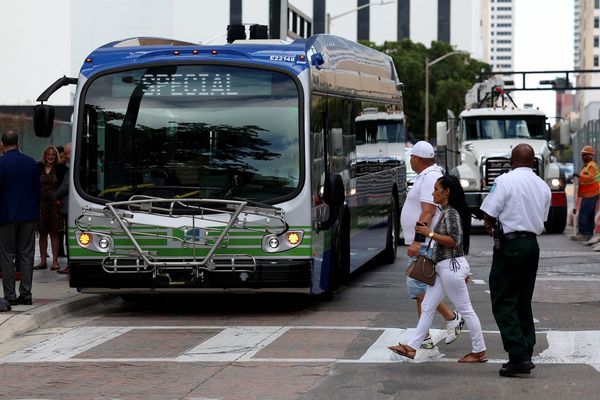
About six years ago, the Brisbane city council sought to forcibly remove a growing number of homeless people staying underneath the Go Between and Kurilpa bridges in South Brisbane.
A few years later, the Queensland government placed a series of large boulders under the Kurilpa Bridge to prevent rough sleepers from returning.
Government policy on housing – and this is true everywhere, not just in Queensland – has always treated elements of the problem as unsolvable; the only thing to do is to move it out of sight.
The Queensland government’s announcement this week of a housing summit has been driven partly by excellent recent reporting about the plight of homeless people in inner Brisbane.
But as debate turns to solutions, homeless people and the working poor have again been shifted out of view. The sorts of ideas being championed by media outlets and politicians – releasing more land in the boondocks – make it clear that neither is prepared to push for an effective solution: one that takes policy out of the hands of developers, real-estate agents and other vested interests.
Discussion about how to address the acute end of the housing crisis tends to focus on finding crisis accommodation. One recent news report suggested moving people into facilities custom-built for hotel quarantine. But where is the next rung on the ladder?
The problem doesn’t go away when people are taken off the streets – only when they have a pathway to a home that is stable and affordable. We already know that some women fleeing violence become trapped in refuges because of a lack of secure long-term housing.
The state government has already begun framing the housing crisis as fundamentally linked to population growth and the pace of greenfield development. But that won’t help those most in need.
“Greenfield sites are great for people migrating to Queensland, people who already have all the resources they need to work from home or [who] drive to work,” Karyn Walsh, the CEO of Micah Projects, said this week.
“But we certainly know that it breaks down for poorer families, leaving them isolated at the fringes of the community.”
Experts say that urban sprawl won’t have any real impact on affordability; that if house prices start falling, developers will simply stop building in that market.
That reality clearly hasn’t stopped developers being touted as our saviours. In one recent media report, the “crippling housing shortage” was cited as the context to an Ipswich developer’s unhappiness that a proposed housing development was flagged for rejection over environmental concerns.
Building a large amount of new social housing would – as opposed to greenfield development – help make homes more affordable. But that’s not really what governments (or media outlets with lucrative real estate advertising streams) necessarily want.
At her press conference on Tuesday, the premier, Annastacia Palaszczuk, was asked by Guardian Australia whether she was willing to champion policies that would ultimately decrease property prices.
“Well the market determines that,” she responded.
Her reticence to answer the question is understandable. There’s a lot of political capital to be lost by upsetting voters who own their own homes (or other people’s homes).
But it’s also the fundamental issue. What do politicians mean when they say they want to make housing “more affordable”, if they aren’t willing to do anything to actually make houses more affordable?
What are we even talking about, if it’s not an attempt to fix a broken housing market?
It’s a question to which we deserve an answer. Because every other proposal championed by the government or in media commentary is being pushed by those with vested interests in the existing housing market.
As Queensland University of Technology urban planner Mark Limb told my colleague Joe Hinchliffe this week: “This is a matter of market failure and we’re not going to free-market our way out of the housing crisis.”







